
Visiting the Grand Canyon in Winter
Experience the truly great outdoors—and chill out—at the Grand Canyon during the off-season.
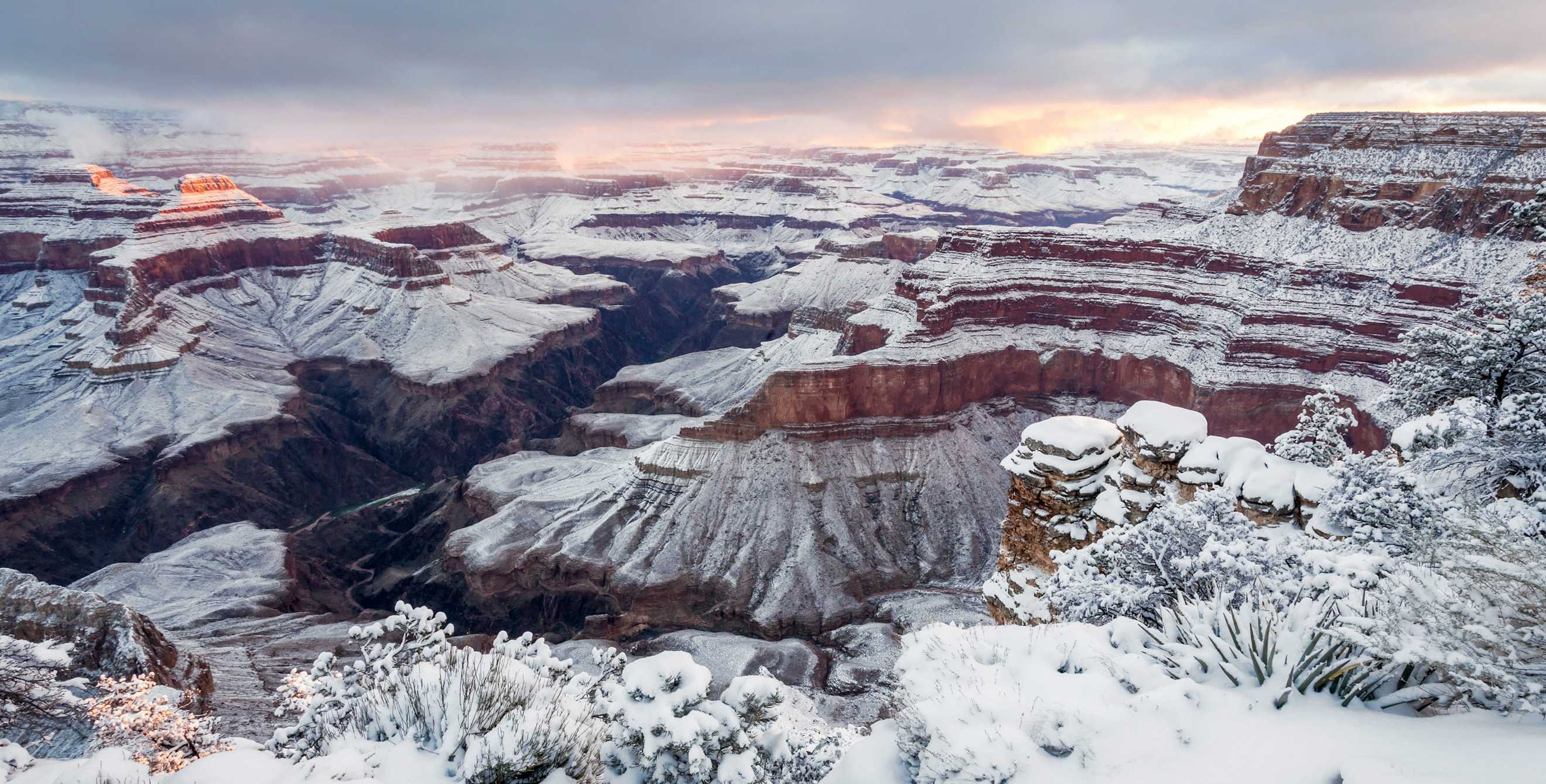
Dramatic, multilayered cliffs of ochre, salmon, and copper carved by wind and water, set against a vivid blue sky—that’s the Grand Canyon I remember from a childhood trip and the one I’ve seen in countless photographs since. So when I step to the rim on a frosty day in February, I am unprepared for just how breathtaking a glittering dust of white renders the whole scene. I reach for my smartphone to try to capture the moment, blowing on my hands to keep them warm. Shivering with amazement, I realize that this seasonal twist on the spectacular but familiar landscape is what draws visitors to the South Rim in winter.
Granted, they also come for the serenity. Fewer than 15 percent of the nearly 6 million tourists who descend upon Grand Canyon National Park in Arizona each year do so in December, January, and February. In fact, the sweaty crowds that I recall jostling me at every turn in the summertime are nowhere in sight. When I catch the sunrise from Navajo Point the next morning, the popular viewpoint is sparse with people. Only a few other hardy souls have braved the below-freezing chill to watch the early light bathe the canyon walls in gold. I sigh aloud and wonder why anyone would visit at another time of year.
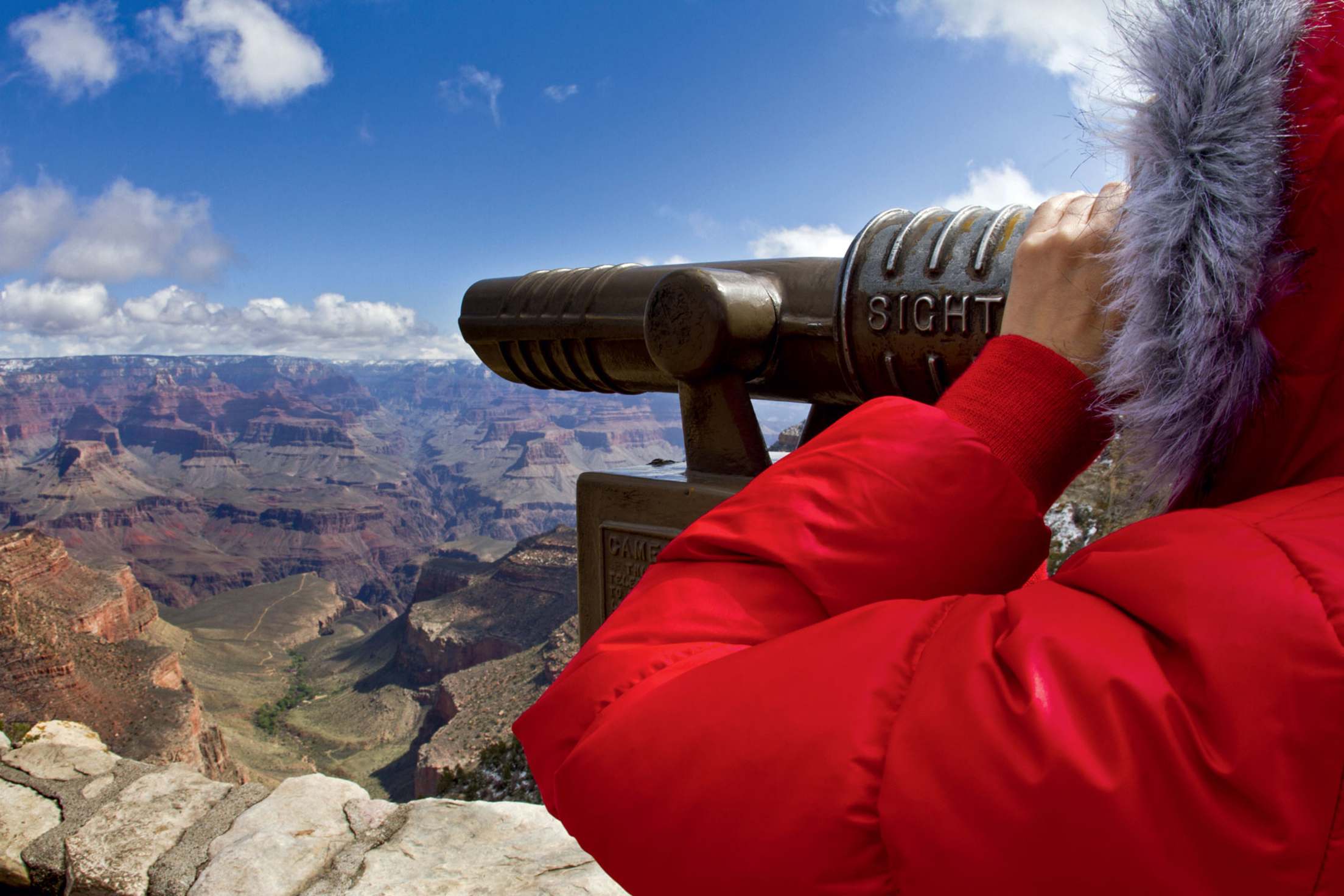
Hermit Road
As I head back to my car, a couple who shared my sunrise vigil still sits comfortably on a stone ledge, wrapped in down sleeping bags, clutching travel mugs of hot chocolate. Realizing I could use a warm beverage too, I set out for Hermit’s Rest, where a snack bar and gift shop are housed in a stone building. Architect Mary Colter designed it to resemble the hideaway of a mythical mountain recluse with authentic pioneer camp details down to the bell rescued from a New Mexico mission and the fireplace streaked with soot.
But the real reason to make the trek is the chance to drive Hermit Road, which follows the rim for seven miles west of Grand Canyon Village. The road is open to private cars December through February only; it’s reserved exclusively for shuttle buses the rest of the year. With my own wheels, I can explore as many sights and trails as I choose, safely and at my leisure. And I do, stopping to take in the panoramic vistas at Hopi, Mojave, and Pima Points. At the Abyss, I risk vertigo to look almost straight down at the canyon floor and a glittering ribbon of the Colorado River some 3,000 feet below. Gazing back up at the cerulean sky, I count myself lucky that my weeklong road trip is corresponding with a spell of clear—if chilly—weather. I’ve heard tell of winter fog so thick it obscures the view.
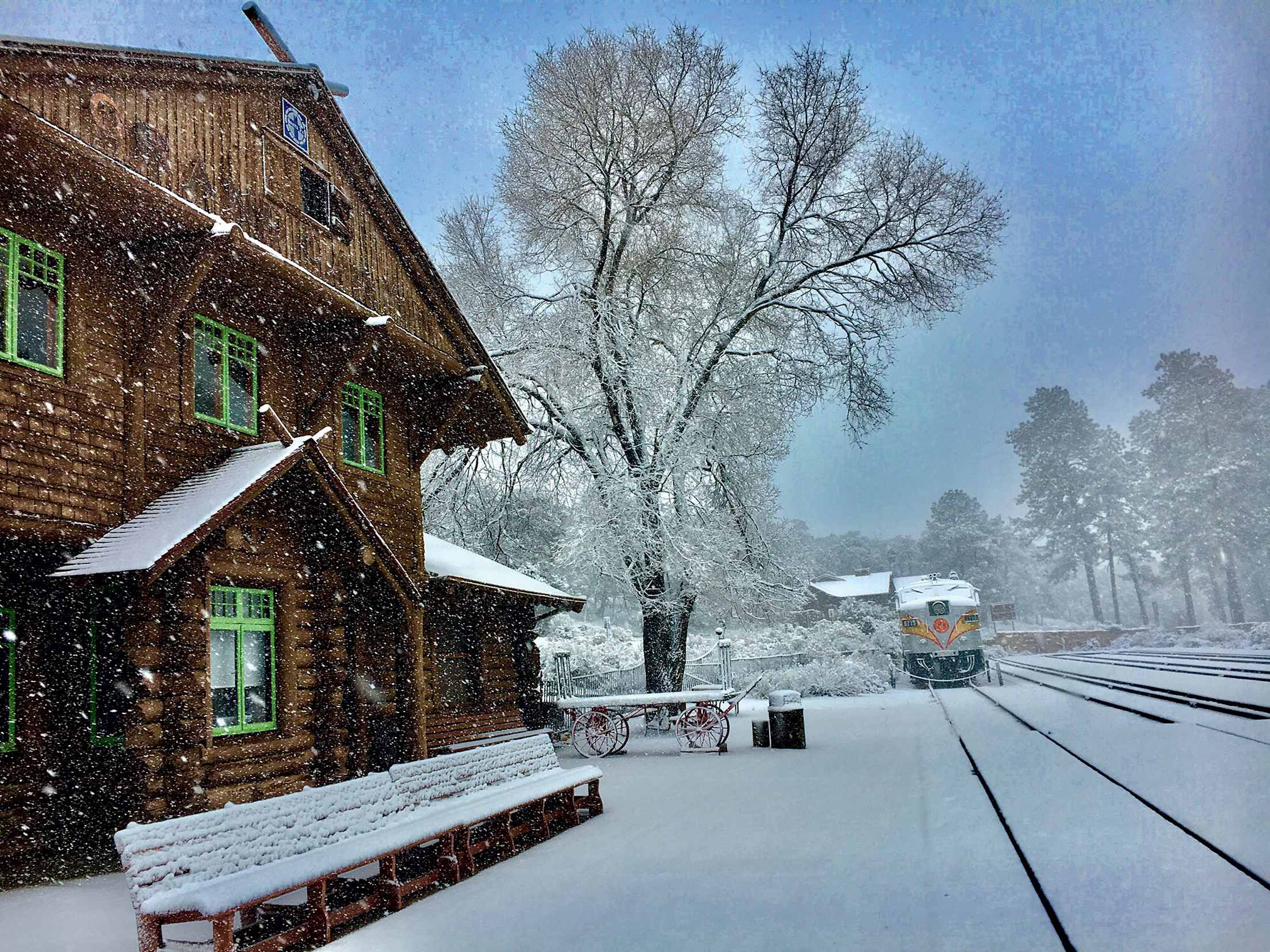
Grand Canyon Village and Visitor Center
Back in the Village, I linger in the museums and visitor centers, enjoying my chance to explore the exhibits and study historic photos (such as those in the Kolb Studio) without anyone waiting behind me. Rangers and staff, savoring the quiet of the off-season, have time to chat. They offer me tips about lesser-known spots and go into more detail than I can absorb about canyon topography.
At Bright Angel Lodge, another of the six park buildings designed by Colter, I take a peek at the ingenious construction of her stone fireplace in the former lounge, now the expansive Fred Harvey History Room. The fireplace features every type of canyon rock, from river to rim, layered in geological sequence. The room’s free exhibit offers a fascinating glimpse into the lives of the Harvey Girls, the adventurous women who headed West in the 1800s to work as waitresses in the entrepreneur’s upscale hotels and restaurants.
At the nearby Hopi House, which Colter devised to emulate a 10,000-year-old dwelling with sculpted terraces, I learn about the history and craftsmanship of the pottery, rugs, and silverwork displayed in the second-floor gallery. Afterward, I bundle up and head east to walk the Trail of Time, an interpretive route where samples of rock illuminated by informational signs denote your “location” in the canyon’s 1,840-million-year evolution.
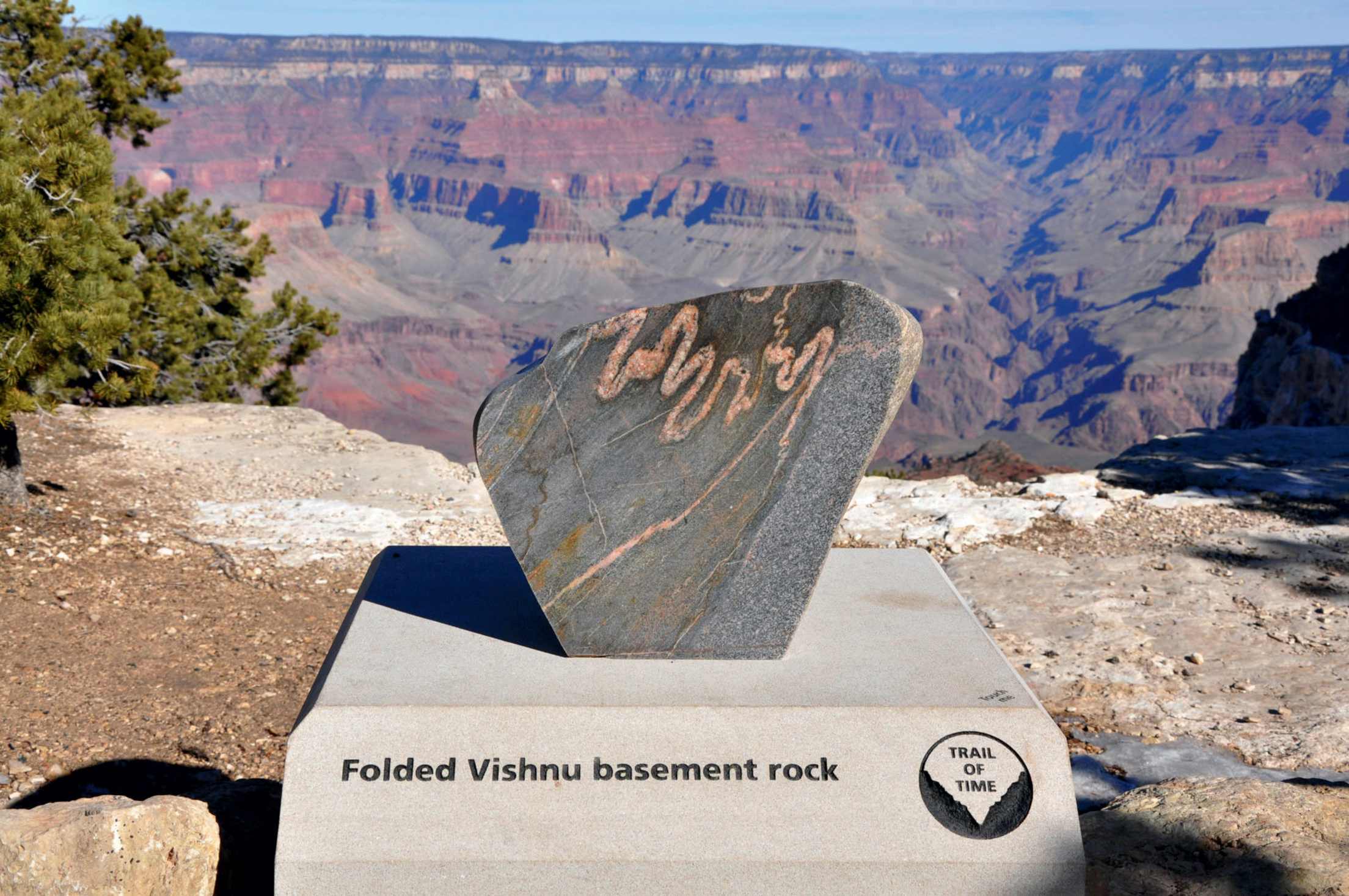
This part of the trail, starting near Yavapai Point, is a segment of the Rim Trail, which stretches 13 miles along the canyon's edge. By the time I get to the youngest stratum of rock, Kaibab limestone (270 million years old), I have new respect for the powerful forces of uplift and erosion that shaped these minerals into the natural wonder we see today. Wintry weather makes it all the more wondrous: The hoodoo-like rock formations at Yavapai and also Mather Point, by the main Visitor Center, look particularly striking capped with snow, and the crystalline light seems to make them glow in my photos.
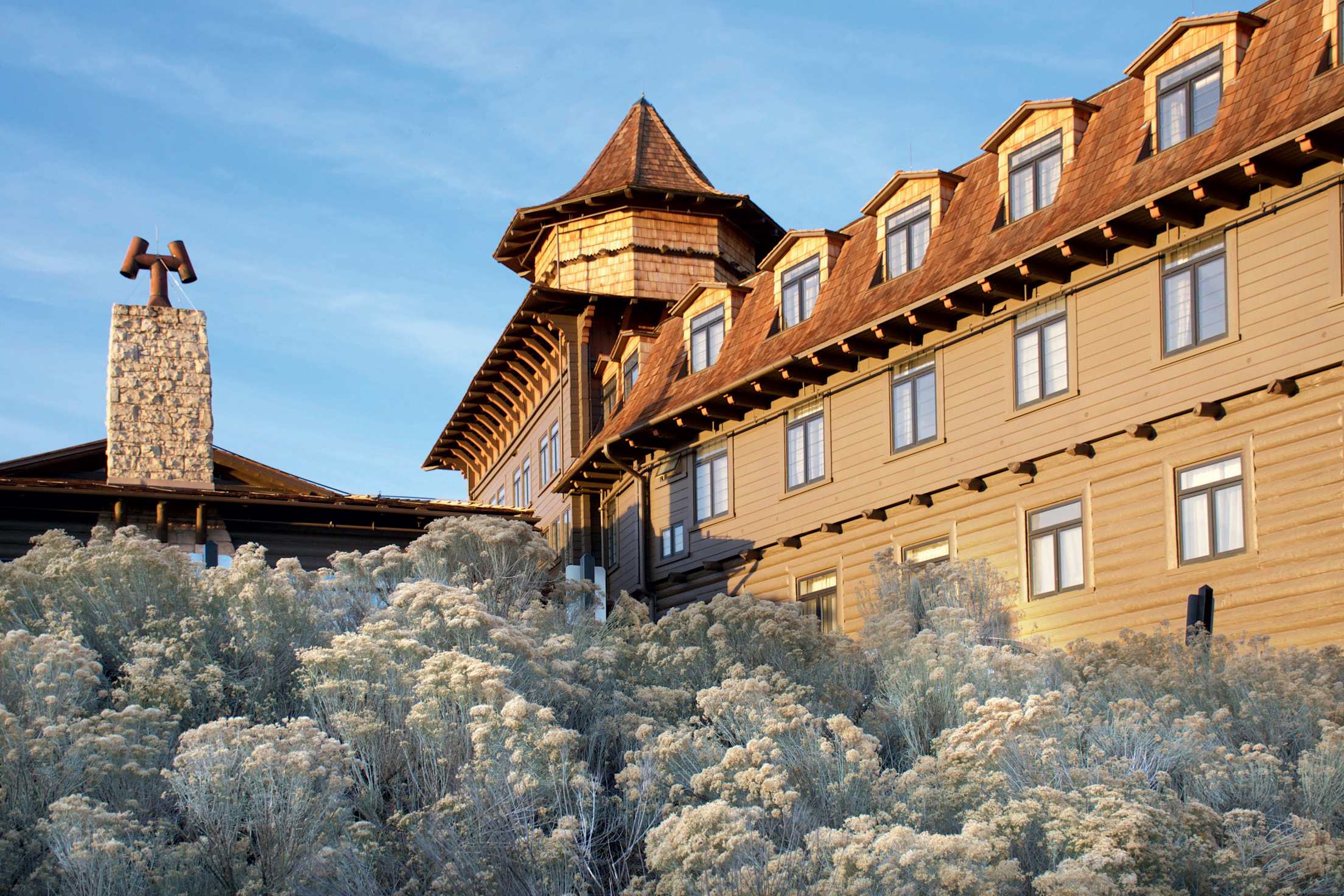
With hands and feet now numb from the cold, I walk back to the Village. I slip into the lobby of El Tovar Hotel, where I immediately avail myself of one of the deep leather chairs pulled up to a fireplace crackling with flames. El Tovar sets the bar high for historic lodges: Each of its 78 rooms is unique in its design and decor, and the soaring ceilings and rough-hewn log walls epitomize cabin chic. Long known for its careful service, the hotel has welcomed luminaries such as Albert Einstein, Elizabeth Taylor, and Sir Paul McCartney.
Thanks to the winter lull, I was able to snag a reservation in El Tovar Dining Room. The crab-stuffed local rainbow trout with roasted poblano rice leaves me just enough room for dessert. The waiter insists I try the chocolate mousse “taco,” a Southwestern take on a French classic. The milk chocolate mousse piped into a hard shell of dark chocolate is exactly as decadent and delicious as it sounds.
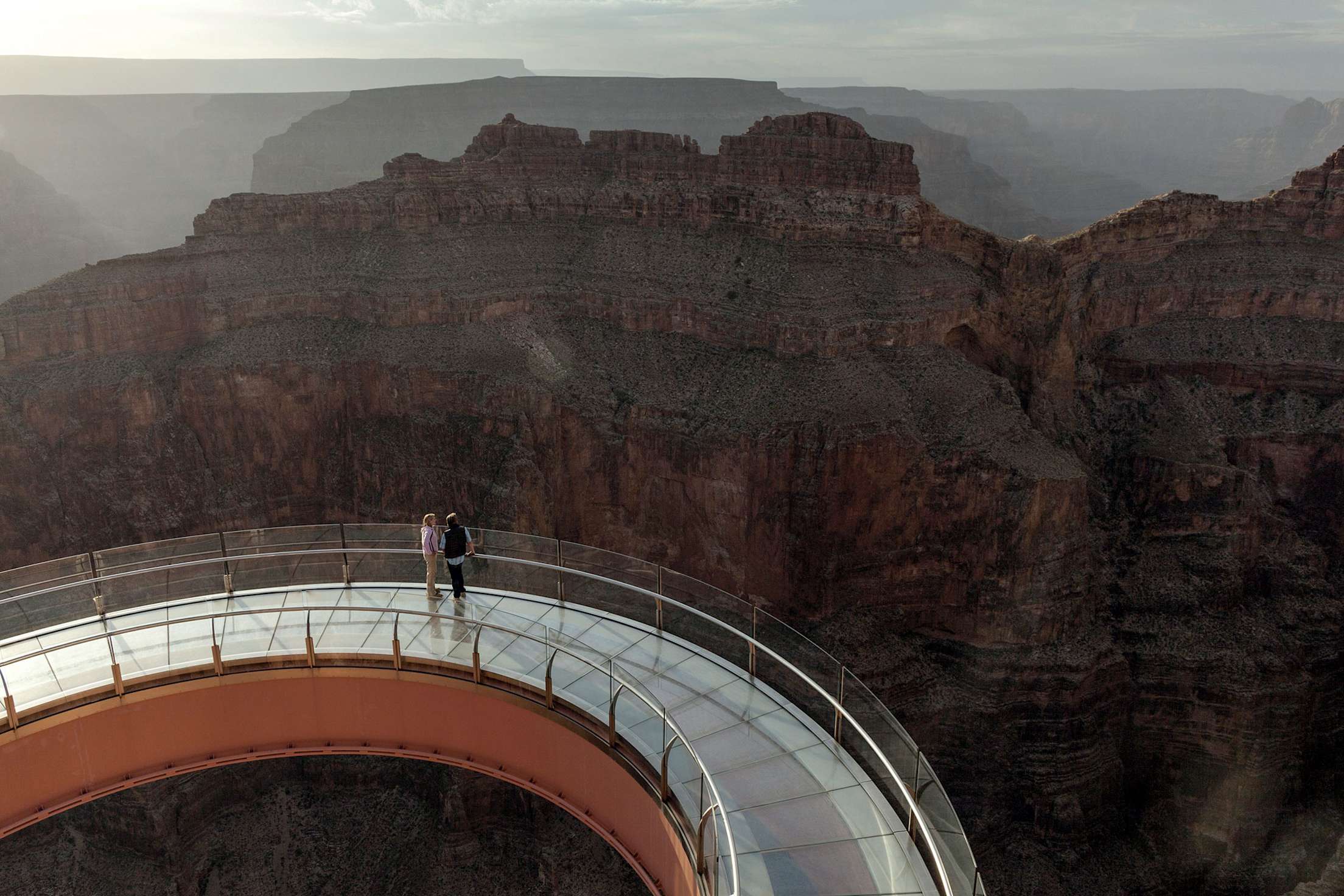
Williams and Grand Canyon West
If I'd taken this trip in December, I might have hopped aboard the Grand Canyon Railway's Polar Express. The holiday-themed train ride, based on the beloved children's book, departs from the depot in the city of Williams, about 60 miles south of the South Rim. This season, the railway added the option of private charters with an elegant mid-century parlor, a lounge, and observation cars. Groups can book the Polar Express for a private, holiday-themed ride to the "North Pole" with Santa aboard through December 30, so plan ahead for next year.
Much farther west—180 miles from Williams—Grand Canyon West beckons. Winter allows me to enjoy it when it's not overrun by tourists. Operated by the Hualapai Tribe on tribal land, Grand Canyon West sits between the national park and Lake Mead National Recreation Area.
Since it opened in 2007, I've been eager to step onto the Skywalk, a horseshoe-shaped glass bridge that juts out 70 feet from the rim. The experience gives me the dizzying sensation of standing on air nearly 4,000 feet above the canyon floor. Even more dramatic is the helicopter tour, during which the outfitter Papillon whisks me to the bottom, setting down on a private plateau next to the Colorado River. It's an entirely different canyon from below the rim. The deeper we go, the more striking its size and scope become.
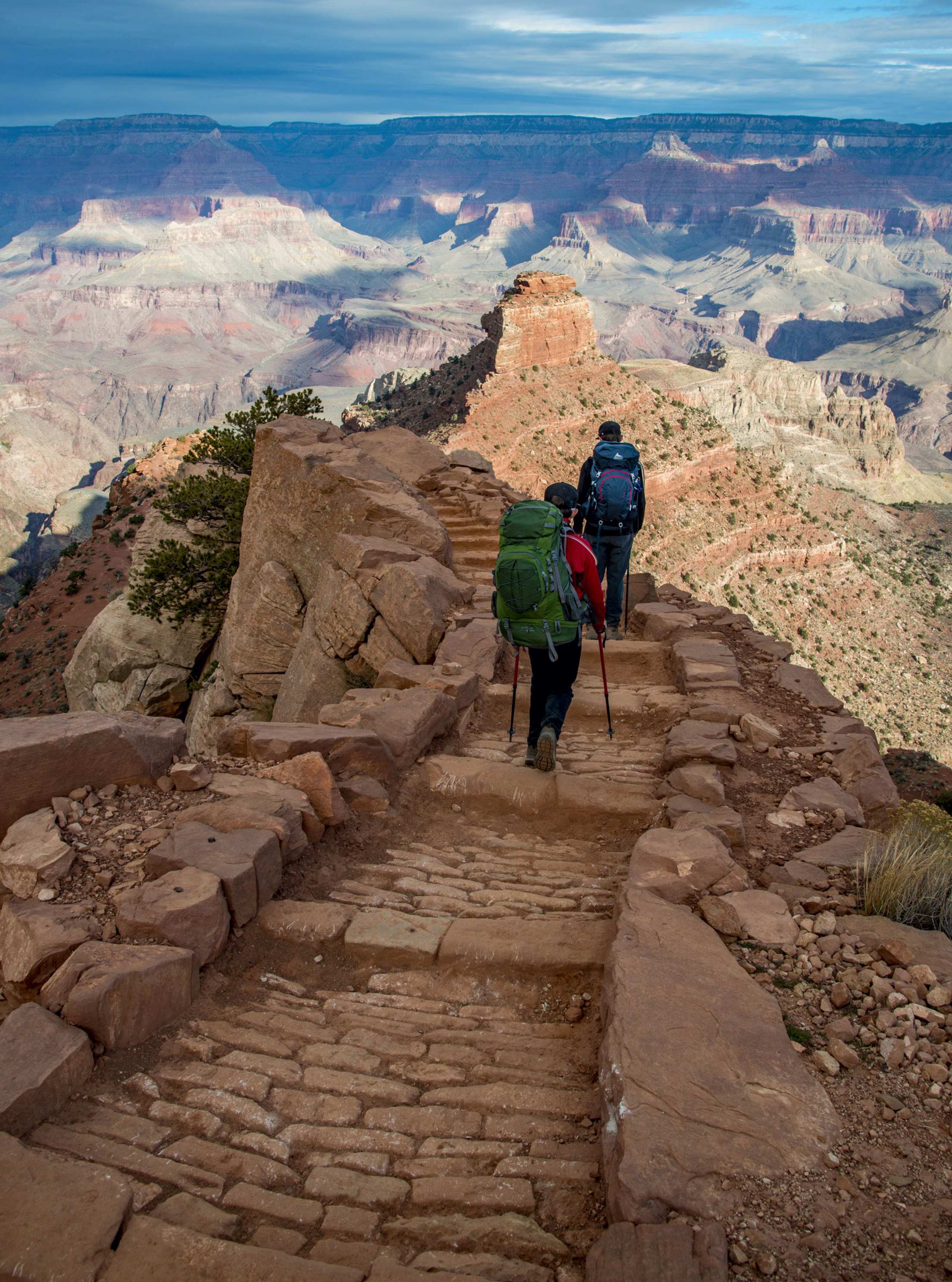
The East Side
I decide to descend again, this time on foot. Hiking in winter can be tricky: Ice and snow often leave trails slippery and downright dangerous. But the South Kaibab Trail from the South Kaibab Trail parking lot is accessible if you have shoe traction devices. With lug-soled boots and hiking poles, I follow the trail just under a mile to Ooh Aah Point, then press ahead another half mile to Cedar Ridge before turning around.
The easternmost stop inside the park is the Desert View Watchtower, another Colter structure. The 70-foot tower seems to rise organically from the rocks around it, blending in with the natural environment. Inside the Kiva Room—once a gift shop, now restored to its original purpose as a viewing area—I admire the intricate symbolism in the vivid murals painted by contemporary Hopi artist Fred Kabotie.
Just northeast of Grand Canyon National Park lies Glen Canyon National Recreation Area. Here, the Colorado River winds through a lacework of red rock walls. Every year, nearly 2 million visitors come to see the much-photographed loop of the river canyon known as Horseshoe Bend, where green water sweeps around a column of pumpkin-colored sandstone for a stunning study in contrasts. The public overlook is accessible from a half-mile-long paved path. This region is also known for its dramatic slot canyons, undulating folds of sandstone carved deep into the plateau by rushing water. Access to some of the slot canyons is a courtesy of Navajo families who own the land; you must have a permit or a credentialed guide.
So I wrap up my Grand Canyon visit by exploring Secret Antelope Canyon with a local tour company. The jeep excursion offers a chance to see Horseshoe Bend from a private overlook. As we shudder and jounce over sheets of slickrock to reach the slot canyon's almost-invisible entrance, it occurs to me that there couldn't be a more perfect end to my trip. From a canyon so grand it covers nearly 2,000 square miles—an area larger than the state of Rhode Island—I've traveled to one so narrow that I'm forced to turn sideways to slide through some of its folds. What better way to appreciate the mighty forces of water that shape the earth?
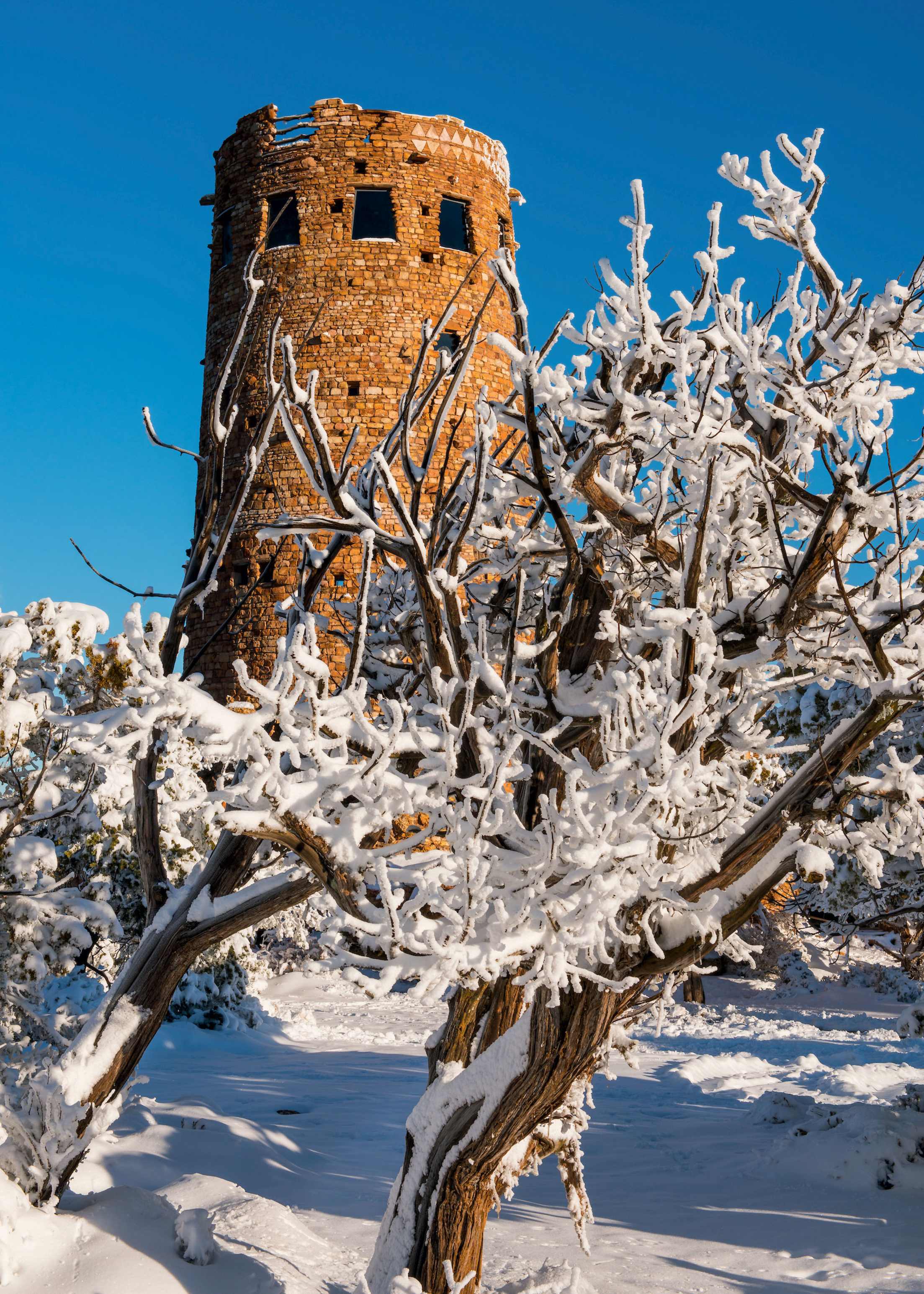
What to Expect When Visiting Grand Canyon National Park in Winter 2022
Grand Canyon National Park is following CDC, National Park Service Office of Public Health, and Coconino County public health safety guidelines. Check nps.gov/grca for updates.
Health Orders
Masks must be worn in all NPS buildings and outdoor spaces where more than six feet of physical distance cannot be achieved, such as bus stops, narrow trails, and busy overlooks, regardless of vaccination status.
Park Access
The South Rim Entrance (near Tusayan, Arizona) and the Desert View East Entrance (near Cameron, Arizona) are open 24/7 to enter and exit the park. The park accepts credit cards, Recreation.gov, Your Pass Now, and America the Beautiful passes for entrance fees, but cash is not accepted.
Park Facilities
The South Rim Visitor Center and Theater remain closed. All Grand Canyon lodges on the South Rim (except Maswik Lodge South) are welcoming guests. Kolb Studio, Yavapai Geology Museum, the Backcountry Information Center, the Grand Canyon Railway and Hotel, and Verkamp's Visitor Center are open. In addition to the lodges, dining options throughout the park include cafes, coffee shops, a food court, taverns, a deli, grab and go, and a food truck. Several gift shops are open. Mather Campground and Trailer Village RV Park are open.
Trails and Shuttle Buses
The Canyon Rim and Greenway trail systems on the South Rim are open, and three shuttle bus routes connect visitors to points throughout the park. Masks are mandatory when boarding and while on the buses. Note: Wearing a mask is still mandatory in public on Navajo Nation land, regardless of vaccination status. —Sally Benford